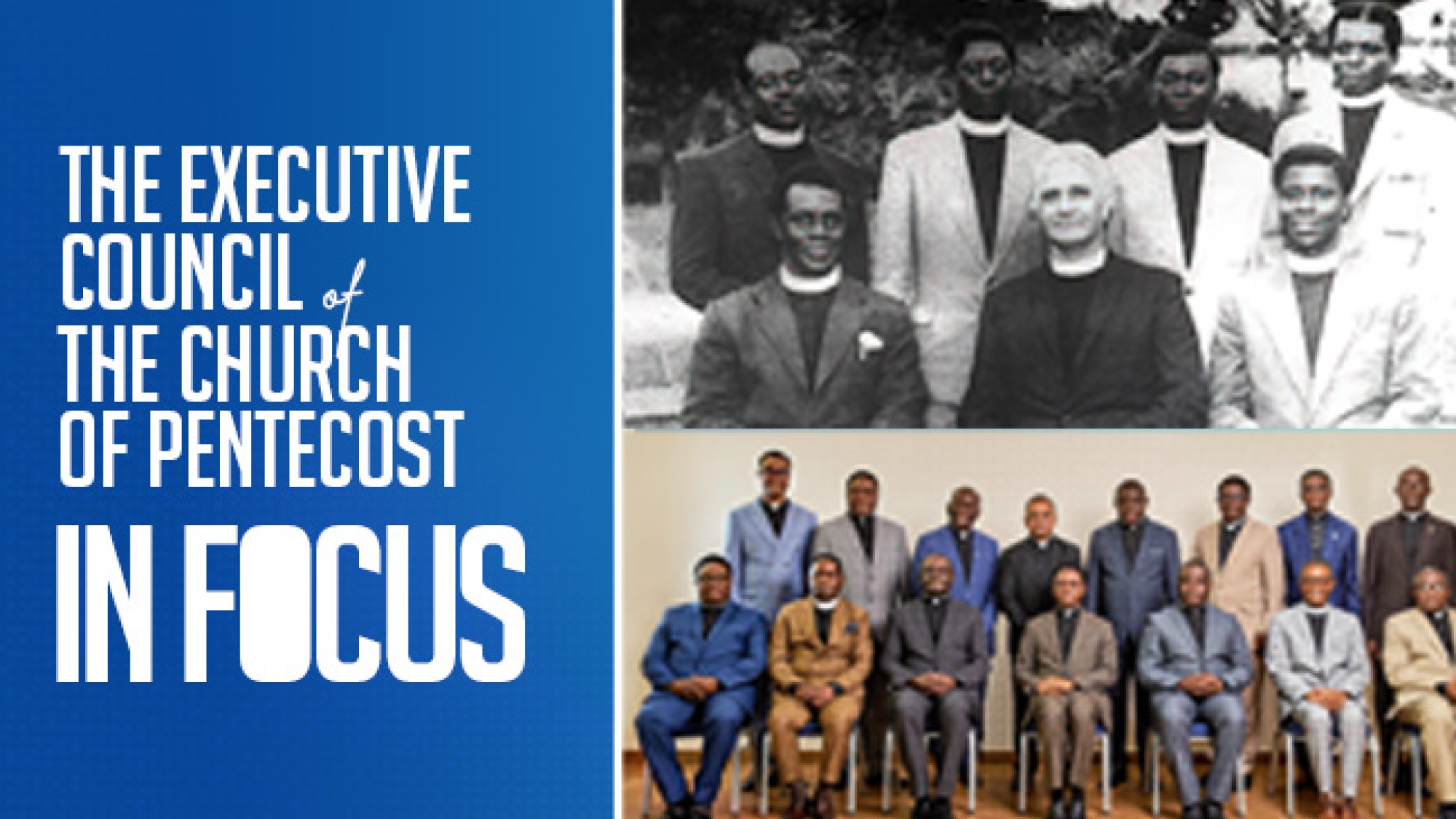Per a definition I chanced upon, a “White Paper” is an authoritative report detailing an issue, position, problem, solution, or even a commercial product or service. The term originated in the 1920s as a position paper published by a UK government department. Therefore, it is a document issued by organisations on matters pertaining to policy directions and decisions on some issues of concern. According to surveys in Europe and the United States, and color psychology, white is often associated with perfection and good. It is unsurprising because the Bible, through which most of the ethos of human civilizations evolved, connotes White for good, purity, innocence, honesty, righteousness, and spiritual cleanness. (Revelations 3:4). White papers are supposed to be good, carrying glad tidings in their contents.
In our daily lives, however, the content of white papers issued by people in authority is a big deal. The Church of Pentecost often releases white papers annually to communicate some major decisions and policy directions the Lord gives to the Executive Council. The growth and current state of the Church testify that the good Lord has been in both the spirit and letter of the numerous white papers issued since its establishment. As a human institution, one may not begrudge whoever uses other lenses to analyze its content, but God has been very gracious, good, and present in all the white papers issued. God’s covenant with The Church of Pentecost and, by extension, His endtime army, makes Him the most significant stakeholder in every decision that emanates from leadership. What makes one ever think that God would sit aloof and unconcerned for unapproved lines to be entertained in the content of the white paper? Indeed, those identified as “black papers” were darkened and viewed through lenses other than the Biblically approved ones.
I would take this opportunity to pay a glowing tribute to all Ministers of The Church of Pentecost and the supportive laity who have submitted to every dictate of the Holy Spirit through the white papers over the years. The commitment and zeal with which Ministers heed their duty stations mostly joyfully is a highly commendable spectacle to behold. Many government agencies with all the juicy compensatory packages still struggle to get some professionals posted to areas that Ministers of the Church easily accept to work. The secret and the difference can only be God and the Power of the Holy Spirit. Many colleagues shudder and cannot just imagine how young men and women excellent in their various professional fields would accept the content of a white paper that seeks to dictate where to stay for almost half the number of years they spend on earth. Congratulations again to all whose names are mentioned in the white paper for executing any task at one duty station or another. If you were eager to go on transfer and your name was not featured, do not worry because God wants you at your duty post for a little while. May the good Lord bless and keep every CoP Minister between now and until we finally meet the Lord. Your labor in the Lord is never in vain.
After the release of every white paper, the three major stakeholders are the individuals concerned or mentioned, their immediate relations and loved ones, and the third parties, or those I refer to as the observers. These observers are primarily in the majority because they constitute one’s constituency, church, or organisation they serve. While many celebrate its content due to the lifeline it provided them, others viewed the color quite differently and never close to anything white due to its contents and the perceived challenges it brought them. Unfortunately, some use the content of white papers to troll others, casting all manner of wild insinuations against their person. Therefore, people’s responses and reactions, especially those mentioned in the paper, depended mainly on external commentaries after their release. So, no matter how determined one decides to view the paper through the lens of faith, some may seek to prove to them that there was nothing white about the paper issued. Please avoid such people and such conversations as much as possible. They would be injurious to your spiritual health.
The critical thing is the posturing and attitude of those mentioned in the white paper, especially the few hours after its issuance. That is when many voices, both from within and without, begin to speak louder than usual. Five (5) main things usually occur when white papers are released. Some are motivated to do more if the content appears good or their paper looks white under their lens. Others may also be complacent if care is not taken, especially those whose efforts may have been acknowledged or commended in one way or another. A few may also be discouraged or shuttered due to unmet expectations. It may also turn off the zeal and passion of some and render them spiritually docile and apathetic. It will also not be unusual for some to take offence and trade their Christian joy for all manner of bitterness. The write-up examines people’s attitudes towards white papers after their release, especially when they are subjects or interested parties in their decisions. Efforts would also be made to encourage them to view the content of white papers through the required lens so that the color doesn’t change in their eyes when some observers begin to paint it differently.
Around 2,000 years ago, an unexpected white paper was released and read to the hearing of Joseph when he was nursing baby Jesus with his dear wife Mary. Unlike today, where there would be many loved ones, colleagues, and mentors readily available to help process some of its difficult contents, the first family of Christianity had theirs read to them during the wee hours of the night. It all happened a few months after Jesus was born. Disturbed and threatened by His birth, King Herod slaughtered all the male babies who were less than 2 years old with the aim of terminating the life of the Messiah. Just before carrying out this treacherous act, God Himself issued and read the content of a white paper to Joseph which read, “Get up, he said, take the child and his mother and escape to Egypt. Stay there until I tell you, for Herod is going to search for the child to kill him.” (Matthew 2:13). This was basically an unplanned and unexpected transfer to a very unfamiliar and unpopular destination at least by Israel standards.
Per the content of the white paper, Joseph and his young family were to make a quick escape to Egypt at night and stay there indefinitely or until further notice. Wait a minute! Was God aware of all the ordeals Mr Joseph had endured from the day he pledged marriage to Mary and all that unfolded until the birth of Jesus? Had Joseph gotten over the possible trolling by some of his male colleagues or old schoolmates about the humanly weird narration about the owner of Mary’s pregnancy? And was that not the time Joseph needed to have some peace and bond very well with the child whose birth he knew he wasn’t personally responsible for? Had Mrs Mary also adjusted to the trauma and stigma of carrying a pregnancy as a virgin and the society’s perceptions about the veracity of the circumstances surrounding her virgin birth? What of baby Jesus and the age he had to be, literally bundled and whisked away to an unknown location just because someone was worried about his presence in this world?
In the Church of Pentecost, the management provides logistical support for those who are transferred to other stations as occasioned by the issuance of the white paper. It is a very well-coordinated plan comprising transport arrangements, appreciation weeks, and well-organized farewell tokens, and some little packages and felicitations to acknowledge the good work executed at a particular duty post. Besides, the recipient locals, Districts or Areas equally provide the warmest reception possible, which usually climaxes with a welcome service and open pledges to support the work of the incoming Ministers. Indeed, the Church usually provides a period of not less than 3 months for those moving on transfers before moving to the next duty station. Ministers, therefore, have some space to plan for their wards’ change of schools and letters of release if they have spouses working in some organizations. Unfortunately for Joseph and Mary, the white paper didn’t offer that breathing space but insisted they move out quickly that very night. The Lord God who effected that transfer was aware of all the risks and inconveniences of traveling to no other place but Egypt, and by night. The God of the white papers issued by The Church of Pentecost also says, He knows and is very much aware of everything.
Besides, there wasn’t going to be any farewell service or appreciation week for Joseph and Mary. Indeed, they did not have the opportunity to bid goodbye to family and friends before leaving. Hmmm! What do you think would be going through Joseph’s mind? Was it really God’s will to marry Mary in the first place? Look at all that I endured before marriage, no honeymoon after my wedding blessing, and for 2 years, look at the content of this white paper? How do you think little Jesus would also be feeling at the time? I believe this would be His silent prayer when His mother woke Him up that night: “Father, please help my parents to fully accept this transfer because, apart from its fulfillment of scriptures, I must avoid King Herod for now.”
In like manner, many loved ones, family members, fellow Christians, and mentors are praying you will quietly accept your newly assigned posts, or station, because you are likely to mess up the whole plan for your life and that of the entire family should you decide otherwise. Besides, “Herod’s” state of heart won’t help your coexistence with him. God understands the discomfort you will likely face in any review, re-assignment, or transfer to your new station. Knowing very well the ancient antagonism between the Jews and the Egyptians, why do you think God would still choose Egypt as their first station? Yet He insisted they move to Egypt. Similarly, the God of the white papers issued by The Church of Pentecost says, He is aware of everything, so please relax! Joseph’s response was swift. In Matthew 2:14-15, “So, he got up, took the child and his mother during the night and left for Egypt, where he stayed until the death of Herod. And so was fulfilled what the Lord had said through the Prophet: Out of Egypt I called my son.”
One major issue those on transfer or called to Missions grapple with is the question about the length of time they are likely to spend in those stations. Like God told Joseph, the white paper issued by the Executive Council of The Church of Pentecost is silent on the period an individual is likely to stay in every duty post. It isn’t as though they are aware and won’t divulge such information. They don’t just have those details. Until the Holy Spirit dictates otherwise, you must offer your best to God, The CoP, and society. Therefore, as to how long, God says, “I will tell you at the appropriate time.”
Then comes the legitimate concerns about the future of that young marriage, the plight of Joseph’s carpentry profession, that of Mary, and most importantly, little Jesus’ education in Egypt. Did the paper by God assure Joseph and Mary a good stay and livelihood in Egypt before their flight? Unfortunately, No! But at least Brother Joseph trusted the God of his fathers to see him through that seemingly “difficult” transfer. There will definitely be many unknowns and uncertainties in almost all of these divinely orchestrated transfers and re-assignments when they are subjected to principles of planning and human scrutiny. Let’s, however, trust the Lord who neither sleeps nor slumbers to help us keep our composure in such moments.
Someone once exclaimed, “But James, as for this very transfer, there is nothing Divine or Prophetic about it. It is just because of what happened the other day.” He continued, “The paper conveying such a transfer could not have been clean as has been whitewashed.” Many circumstances, of course, may lead to a person’s reassignment or transfer. Indeed, the Lord Jesus’ transfer was as a result of the Jealousy and sense of insecurity of King Herod. So, although there was a human hand called Herod, the reason being Jealousy, the Bible makes it clear that it was still Divine and Prophetic. Truly, it becomes extremely difficult to accept something as God’s will when you literally see the hands of Men at work in situations as this. Joseph, the son of Jacob in the Old Testament, was thrown into an empty pit by his brothers to rot. It was Judah who intervened for him through a supplementary transfer to Egypt as a slave in Potiphar’s house. Ironically, Joseph’s transfer to Egypt and Jesus’ Daddy to Egypt were occasioned by jealousy and envy. However, God and His Heavenly host monitored and supervised them to align with His purposes. It’s quite easy to admonish others to accept their transfer by using both Biblical illustrations and other life experiences. However, when it comes close to their doorstep, they expect the whole world to go around them as though something strange is happening to them.
Many of these perceived punishments may be coincidental, but hardly would anyone believe some of the issues raised to be mere coincidences. Whichever they present, care must be taken to ensure that the focus and gaze stay on God’s sovereign hand instead of human machinations. Interestingly, the Lord gave the wicked and treacherous King Herod some time before he died for Jesus and His family to return home. The following questions could easily run through the minds of many: Couldn’t God stop Herod the very day he set his heart to kill Jesus? And wasn’t the trip to Egypt avoidable if God had reprimanded Herod or frightened him with some dreams, at least considering the inconvenience of that transfer and its associated risks? God knows the right duration of time His children are expected to stay anytime He is allowed to lead. When the time came for Jesus to return to Jerusalem, King Herod died. He, therefore, knows what to do at every moment in our lives. Let us give Him some respect as Sovereign God.
Instead of losing your fervency to becoming apathetic, adamant, and spiritually docile due to the content of an issued white paper, I would encourage all to see God’s divine hands still, irrespective of the human fists you could guess right or wrong. No record in the Bible shows that Joseph’s professional career was hampered in any way. He also didn’t become a burden on himself or society after he returned to Israel. What we know today is that his name and good deeds inspire the entire world during every Christmas season since the birth of Christ. What an honor! Mary, the mother of Jesus, did not end up in misery when she became a conduit for Christ’s usage on earth. Her legacy still lives on after all these years.
Indeed, Jesus made adequate preparations for her upkeep on the cross before He gave up His ghost. “When Jesus saw his mother there, and the disciple whom he loved standing nearby, he said to her, “Woman, here is your son,” and to the disciple, “Here is your mother.” From that time on, this disciple took her into his home.” (John 19:26-27). Jesus did not lose out equally, even in terms of his educational upbringing, although he had to spend some time in Egypt as a toddler. At age 12, He marveled the Scribes and Teachers of the Law in the Temple with His tantalizing ideas about the Holy Scriptures. If faithful God went ahead of baby Jesus and His parents, prepared a place for them in Egypt, and did the same for Joseph in his teens, then He has surely moved ahead of all on the transfer bill. The color of the white paper is indeed white if you put on the right lens of faith in viewing it.
Ten out of the twelve spies Moses sent to Canaan came with all manner of frightening reports. They managed to convince the entire Israelite congregation that they would be as good as dead should they heed the contents of God’s white paper for them. Even when Caleb and Joshua watched their paper with the required lens of faith and thus, saw victory ahead, the others succeeded in causing the entire nation to wander in the wilderness needlessly for 40 whooping years. So, please do not allow anyone to dictate to you what they see as the true color of your white paper. It may just be a figment of their own human deductions, wishes, and imaginations. Allow the faithful God in the person of the Holy Spirit the needed space to prove that the color is whiter with glad tidings than you can ever imagine. Don’t worry! Your engagement, stay, and the day you leave your duty station will all fulfill a prophecy. So, relax. Like Joseph and Mary in the early days of Jesus’ birth, you would understand it better by and by. He said in Jeremiah 29:11, “For I know the plans I have for you,” declares the LORD, plans to prosper you and not to harm you, plans to give you hope and a future.” Stay blessed as I dedicate this song in the Ghanaian language below to all CoP Ministers and the Laity.
Yesu ma memfa me ho
Nto wo so yiye daa nyinaa
Na mintim w’adwuma yi mu
Na mentena w’apirakuro no mu.
In English, it means Jesus: let me keep trusting in you in everything so I will be grounded in your vineyard business and abide in your suffering on the cross.
Written by Apostle James Orhin Agyin














